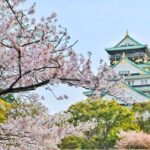While most travelers visit Japan to take in the incredible sights, sounds and flavors of its great cities, this technologically advanced country is also full of natural beauty. From its stunning countryside to majestic mountain landscapes, there’s no shortage of opportunities to take in Japan’s unique natural wonders. Exploring one of Japan’s well-marked, well-maintained trails is the best way to experience them firsthand.
From one-day hiking trails to multi-day excursions, trekking in Japan should be on every traveler’s bucket list. No matter what trail you choose to travel, you’re sure to come across points of interest like stunning volcanic peaks, ancient temples, serene streams and tons of beautiful views.
Here are the 6 best hiking routes to try on your journey to Japan and what you can expect to see as you traverse the scenic trails that define them.
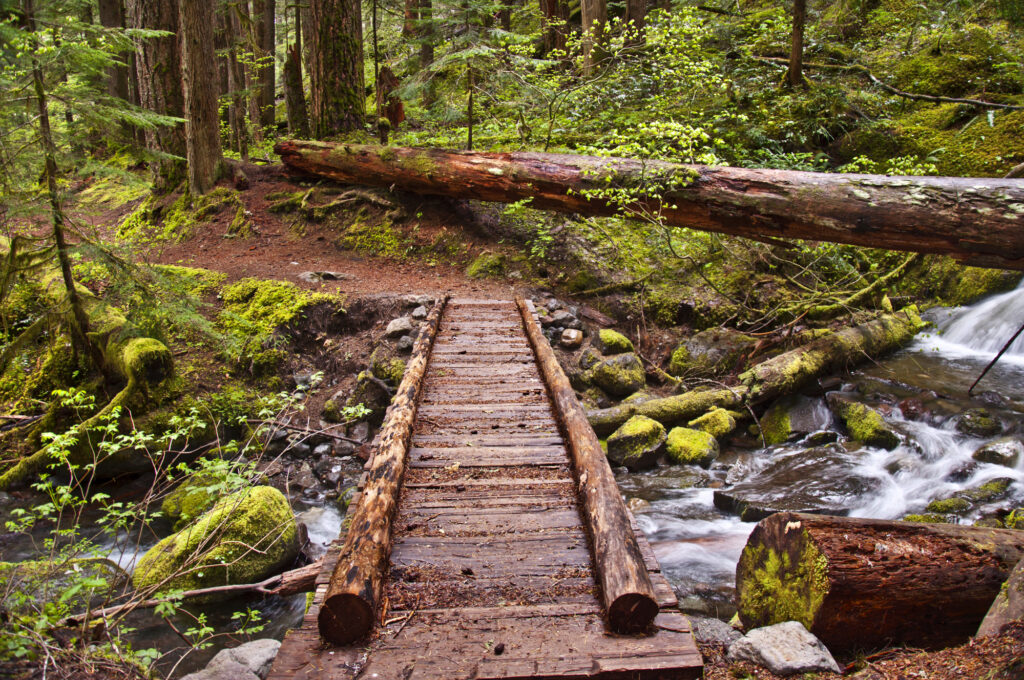
1. Kamikochi-Yari-Hotaka
The short and sweet Kamikochi-Yari-Hotaka Pilgrimage route is truly incredible. It takes trekkers on a scenic journey through the northern Japanese Alps, characterized by its craggy mountains, dramatic cliffs and mysterious, cloud-filled valleys. The trail also takes hikers up Mount Yarigatake and Mount Okuhotaka-dake, two towering peaks that offer incredible views.
While the hike is only 34 kilometers long, it’s a tough journey. The entire circuit takes three days to complete, and it’s packed with steep climbs and even some obstacles. In some spots, you’ll have to scale ladders attached to rock walls. The journey’s not for the faint of heart, as you’ll be climbing and looking down incredible heights. If you’re an experienced hiker and are up for the challenge, take the Kamikochi-Yari-Hotaka circuit and bask in the glorious views of the Japanese Alps.
2. Shikoku Pilgrimage
The Shikoku Pilgrimage route, also called the Shikoku 88 temple trail, is one of Japan’s most famous trails. The trail takes you on a 1,200-kilometer journey around the island of Shikoku, and you’ll hug the coastline as you travel past a total of 88 temples (if you plan on completing the entire trek).
The Shikoku Pilgrimage route is long and time-consuming to hike in its entirety, taking about 6 to 8 weeks for the average hiker to complete. Luckily, the journey is mostly an easy one. While there are some steep ups and downs in the more mountainous areas, it’s not a difficult trail to hike, but it is long. Many visitors break up the journey and, instead, choose to visit all 88 temples throughout their lifetime, returning to the island again and again to enjoy the majestic scenery.
Any time of year is a great time to hike the Shikoku 88, but spring and fall are the best seasons in terms of temperature. If you plan to hike the trail, but don’t have the time to do it all, make sure to visit the temples, shrines and pagodas at the Mount Koya temple settlement. This popular starting point is the center of Shingon Buddhism and is packed with cultural treasures you won’t see anywhere else.
3. The Shinetsu Trail
One of Japan’s newest treks, The Shinetsu Trail officially opened in 2008, but the path it follows is actually centuries old. The journey takes you through the Sekida Mountain Range, offering glorious, wooded landscapes like extensive beech forests. The trail connects several smaller towns, so you can get an up-close look at the rich local heritage and culture.
The Shinetsu Trail is a manageable one. At 80 kilometers, it takes the average hiker around five to 6 days to complete. The trail is even split into 6 sections, so you can take it day by day and hike at a leisurely pace. There are some steep climbs on the trail, but it’s generally an easy hike, even for inexperienced trekkers.
The best time to journey on The Shinetsu Trail is during the spring and autumn, but summer is also a pleasant time as long as temperatures aren’t too hot. You’ll get to witness the forests in full bloom, when they look their majestic best.
Most trekkers take the time to hike the entirety of The Shinetsu Trail, since Mount Madarao and Mount Amamizu, which lie at each end of the trail, are must-see sights. If you’re looking for a short and sweet excursion that’s packed with natural beauty, add The Shinetsu Trail to your itinerary.
4. The Basho Trail
Follow in the footsteps of Matsuo Basho, one of Japan’s earliest haiku masters, by hiking the majestic Basho Trail. This long trek is peaceful and packed with beautiful natural wonders, like beech and cherry forests, soaring mountains and babbling brooks. The stunning scenery will reinvigorate you, and no matter where you start or stop on The Basho Trail, you’ll come across idyllic landscapes you’ll remember for a lifetime.
At over 2,500-kilometers in length, The Basho Trail is a long one. It takes trekkers months to complete in its entirety, so most people walk small sections and take bullet trains to various points of interest along the way. The trek is generally easy for novice hikers, but there are some steep parts, and the entire journey is a long one. The best time to hike the Basho is in spring or autumn. In the spring, you’ll get to witness the magnificent cherry blossoms, while a fall visit lets you enjoy the lovely autumn leaves.
Some must-see locations on The Basho Trail include the Uramino-taki waterfall, a peaceful spot recounted in Basho’s poems. You should also make a point to visit Yamadera Temple. While the temple is a wonder in itself, the stunning views of the surrounding landscape are truly a sight to behold.
5. The Nakahechi Trail
One of the most popular pilgrimage treks in Japan, The Nakahechi Trail is truly amazing. The trail is known as “The Imperial Route,” since emperors, nobles and pilgrims have traveled the route for centuries. You’ll encounter beautiful woodlands and incredible mountain scenery until you reach the majestic Hongu Taisha, one of Japan’s celebrated Shinto temples, set against the backdrop of one of the country’s best-known waterfalls, the Nachi Taisha.
The Nakahechi Trail is a manageable 40 kilometers in length, and it takes the average hiker two to three days to reach the Hongu Taisha from its starting point at Takijiri-oji. The hike can be somewhat difficult, with steep ascents and descents. The journey is well worth the effort, though, and the incredible Nachi Taisha falls are even said to have healing properties!
Any time of year is a great time to hike The Nakahechi Trail, but temperatures are most pleasant in the spring and fall. No matter what time of year you’re visiting, be sure to pay a visit to the Kumano Hongu Heritage Center, so you can get a better understanding of this incredible circuit and its shrines.
The Nakahechi Trail is actually part of the Kumano Kodo, a circuit is composed of a series of 7 distinct trails that lead hikers to three famous Shinto shrines—Hongu Taisha, Hayatama Taisha and Nachi Taisha, known collectively as Kumano Sanzan. If you have the time, take all 7 routes to experience not just the area’s unique natural beauty, but also the unmatched splendor of Japan’s traditional architecture.
6. The Nakasendo Trail
Dating back to the Edo period, the Nakasendo Trail is a historic pilgrimage route that connects Kyoto to Tokyo. This trail is popular among tourists and locals alike since it takes you through some of the most stunning Japanese landscapes, all while giving you an up close and personal look at the country’s unique history and culture.
This 530-kilometer trail is long, and it takes about 30 days to complete from start to finish. Many trekkers take a bullet train to towns along the route, then hike for a day or two to see specific points of interest. Some must-see destinations include the Torii Pass, which gives you an incredible view of the majestic Kiso Valley. You should also plan to stay at a ryokan, or a traditional Japanese inn, along your journey. It’s the best way to experience Japanese culture firsthand, as you enjoy a traditional meal and bask in relaxing hot springs.
Spring and autumn are the best times to hike the Nakasendo Trail since the summers are rainy and the winters are snowy. The most picturesque time to visit is March to May, when the wildflowers and cherry blossoms are in view, as well as August to October, when the fall leaves are at their most colorful.
Immerse yourself in Japan’s hiking history
Trekking any of Japan’s majestic pilgrimage routes is an experience of a lifetime. No matter what trail you choose to follow during your journey to Japan, you’ll encounter majestic natural wonders you won’t see anywhere else. From the lofty peaks of the Kamikochi-Yari-Hotaka Trail to the majestic valleys of The Nakasendo Trail, Japan’s unique landscape—dotted with historic towns, ancient temples and serene shrines—is a wonder to behold. As you plan your trip to Japan, be sure to set aside some time to enjoy the country’s pilgrimage routes and experience majestic natural wonders firsthand.
- How Much Money Can You Make Teaching English in Japan? - December 12, 2022
- The Best Places to Teach English in Japan - December 9, 2022
- The Best Credentials for Teaching English in Japan - December 8, 2022

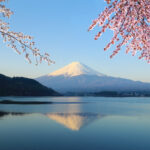
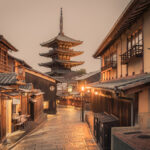
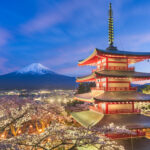
![20 Best Japanese Directors [And Their Most Famous Movies] 20 Best Japanese Directors [And Their Most Famous Movies]](https://justaboutjapan.com/wp-content/uploads/2023/05/20-Best-Japanese-Directors-And-Their-Most-Famous-Movies-150x150.jpg)



